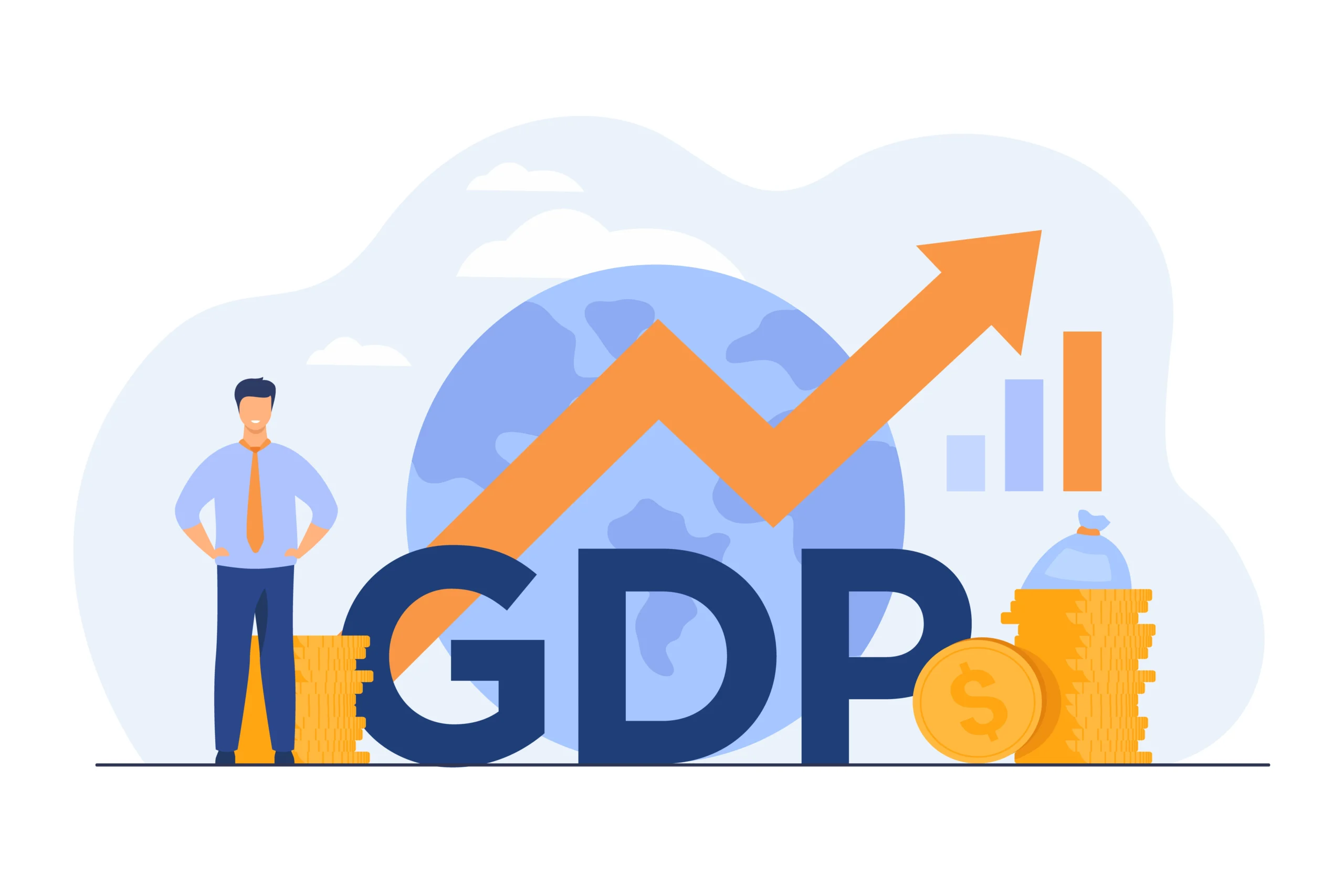As the world economy continues to evolve and expand, keeping track of the wealthiest nations becomes increasingly important. GDP, or Gross Domestic Product, is a measure of a country’s economic output and is often used to determine a nation’s wealth. In this article, we will explore the top 15 richest countries according to their projected GDP for the year 2023. These rankings provide valuable insights into global economic trends and can help businesses and investors make informed decisions.
It’s important to note that while GDP is often used as a measure of a country’s wealth, it’s not the only factor that contributes to a nation’s overall well-being. Other factors such as quality of life, social welfare programs, and income inequality also play a role. Additionally, GDP rankings can fluctuate based on various factors such as global events, natural disasters, and economic policies.
Summary Top 15 Richest Countries According To GDP 2023
| Country | GDP (trillions of USD) | Brief |
|---|---|---|
| United States | 20.89 | The largest economy in the world, with a highly diversified economy and a strong focus on services, technology, and innovation. |
| China | 14.72 | The world's most populous country and a rapidly growing economy, with a focus on manufacturing, exports, and investment in technology and infrastructure. |
| Japan | 5.06 | A highly developed economy, with a strong focus on technology, manufacturing, and services. It faces challenges related to an aging population and low birth rates. |
| Germany | 3.85 | The largest economy in Europe, with a strong focus on manufacturing, particularly in the automotive industry, and a highly skilled workforce. |
| United Kingdom | 2.67 | A highly diversified economy, with a focus on services, finance, and technology. It faces uncertainty related to Brexit and ongoing trade negotiations. |
| India | 2.66 | The world's second most populous country and a rapidly growing economy, with a focus on services, manufacturing, and agriculture. It faces challenges related to infrastructure and inequality. |
| France | 2.63 | A highly developed economy, with a focus on services, manufacturing, and technology. It faces challenges related to high levels of public debt and unemployment. |
| Italy | 1.89 | The third-largest economy in the Eurozone, with a focus on manufacturing, services, and tourism. It faces challenges related to political instability and high levels of public debt. |
| Canada | 1.64 | A highly diversified economy, with a focus on natural resources, services, and manufacturing. It faces challenges related to an aging population and trade relations with the United States. |
| South Korea | 1.63 | A rapidly growing economy, with a focus on technology, manufacturing, and exports. It faces challenges related to an aging population and geopolitical tensions in the region. |
| Russia | 1.48 | A resource-rich economy, with a focus on oil, natural gas, and minerals. It faces challenges related to low levels of diversification and economic sanctions. |
| Brazil | 1.44 | The largest economy in Latin America, with a focus on agriculture, natural resources, and manufacturing. It faces challenges related to political instability and high levels of inequality. |
| Australia | 1.32 | A resource-rich economy, with a focus on natural resources, services, and manufacturing. It faces challenges related to climate change and geopolitical tensions in the region. |
| Spain | 1.28 | A highly diversified economy, with a focus on services, manufacturing, and tourism. It faces challenges related to high levels of unemployment and political instability. |
| Indonesia | 1.05 | The fourth-most populous country in the world, with a focus on natural resources, services, and manufacturing. It faces challenges related to infrastructure and inequality. |
United States: $20.89 Trillion
The United States is the world’s largest economy, and it is projected to maintain its position as the top-ranking country on the list of the top 15 richest countries according to GDP in 2023, with a projected GDP of $20.89 trillion. The U.S. economy is diverse and robust, with a strong emphasis on service industries such as finance, healthcare, and technology. These industries are major contributors to the country’s GDP, and they are expected to continue to grow in the coming years.
The United States is also home to many multinational corporations, including some of the largest and most successful companies in the world. These companies, such as Amazon, Apple, and Google, have a significant impact on the country’s economy, contributing to job growth, innovation, and technological advancements.
Another factor contributing to the strength of the U.S. economy is its highly skilled workforce. The country has a well-established education system and is home to many of the world’s top universities. This has helped to create a workforce that is well-educated, innovative, and adaptable to changing economic conditions.
It’s worth noting that the U.S. economy, like all economies, is subject to various factors that can impact its growth and stability. These include global events, natural disasters, and changes in economic policies. However, despite these challenges, the U.S. economy has remained resilient and continues to be a major force in the global economy.
China: $14.72 Trillion
China is the world’s second-largest economy, and it is projected to have a GDP of $14.72 trillion in 2023. The country has experienced rapid economic growth over the past few decades and has emerged as a major player in the global economy. China’s economic growth has been driven by several factors, including its large and rapidly growing middle class, which has helped to fuel domestic consumption.
China’s economy is heavily reliant on exports, particularly to the United States and other countries in Asia. The country is a major exporter of consumer goods, electronics, and machinery. However, China has also been working to shift its economy away from exports and towards domestic consumption, to create a more sustainable and balanced economy. This shift has been driven in part by the country’s rising middle class, which has become a major consumer of goods and services.
Another key factor contributing to China’s economic growth is its focus on technology and innovation. The country has made significant investments in research and development, particularly in areas such as artificial intelligence, renewable energy, and biotechnology. These investments have helped to create a strong ecosystem for innovation and have contributed to the country’s position as a global leader in technology.
Despite its economic success, China still faces several challenges. Income inequality is a significant issue in the country, with a large gap between the rich and the poor. Environmental issues are also a major concern, with air pollution and water contamination affecting many parts of the country. Additionally, China has an aging population, which presents challenges for the country’s social welfare system.
Despite these challenges, China’s economy is likely to remain a major player in the global economy in the coming years. The country’s large and rapidly growing middle class, focus on technology and innovation, and shift towards domestic consumption are all factors that are likely to contribute to its continued economic growth.
Japan: $5.06 Trillion
Japan is projected to have a GDP of $5.06 trillion in 2023, making it the third richest country in the world according to GDP. Japan has the third-largest economy in the world, behind the United States and China. The country is known for its advanced technology and innovation, particularly in the automotive, electronics, and robotics industries.
Japan’s economy has faced several challenges in recent years, including a declining population and low birth rates, which have led to a shrinking workforce. The country has also struggled with deflation, which has made it difficult for the government to stimulate economic growth. However, the country has made efforts to address these issues, including through policies aimed at increasing immigration and promoting innovation.
One of the key drivers of Japan’s economy is its export industry. Japan is a major exporter of automobiles, electronics, and machinery, among other products. The country is also known for its strong financial sector, which includes large banks and insurance companies.
Another important factor contributing to Japan’s economic success is its focus on innovation. The country is home to many innovative companies, particularly in the technology sector. Japan has also made significant investments in research and development, particularly in areas such as robotics, renewable energy, and biotechnology.
Despite its economic success, Japan still faces several challenges, including an aging population and a shrinking workforce. These demographic trends are expected to continue in the coming years, which could put pressure on the country’s social welfare system and economic growth. However, with its strong export industry and focus on innovation, Japan is likely to remain an important player in the global economy.
Germany: $3.85 Trillion
Germany is projected to have a GDP of $3.85 trillion in 2023, making it the fourth richest country in the world according to GDP. Germany is the largest economy in Europe and is known for its advanced technology, innovation, and manufacturing. The country has a highly skilled workforce and a strong emphasis on research and development.
One of the key drivers of Germany’s economy is its export industry. Germany is a major exporter of automobiles, machinery, chemicals, and other industrial products. The country is also known for its strong financial sector, which includes large banks and insurance companies.
Germany has a strong emphasis on innovation and technology, particularly in areas such as renewable energy and environmental technology. The country has made significant investments in research and development, which has helped to support the growth of innovative companies and industries.
Despite its economic success, Germany faces several challenges, including an aging population and a shrinking workforce. The country has implemented policies aimed at increasing immigration and promoting education and training to address these issues. Additionally, Germany has faced some economic uncertainty due to the ongoing impact of the COVID-19 pandemic.
Overall, Germany’s strong export industry, focus on innovation and technology, and skilled workforce are likely to continue to support its economic growth in the coming years. However, the country will need to address its demographic challenges and adapt to changing global economic conditions in order to maintain its position as one of the world’s leading economies.
United Kingdom: $2.67 Trillion
The United Kingdom is projected to have a GDP of $2.67 trillion in 2023, making it the fifth richest country in the world according to GDP. The UK is a highly developed country and has the sixth-largest economy in the world. The country is known for its financial sector, manufacturing, and service industries.
The UK’s economy has faced some uncertainty in recent years due to its decision to leave the European Union, a process known as “Brexit.” The UK has implemented policies aimed at promoting economic growth and trade, including through new trade agreements with countries outside of the EU.
One of the key drivers of the UK’s economy is its service industry, which includes industries such as finance, healthcare, and retail. The country is also a major exporter of manufactured goods, including automobiles and machinery.
The UK has a highly skilled workforce and a strong emphasis on research and development. The country has made significant investments in science and technology, which has helped to support the growth of innovative companies and industries.
Despite its economic success, the UK faces several challenges, including rising inequality and a shortage of affordable housing. The country has implemented policies aimed at addressing these issues, including increased government spending on social welfare programs and affordable housing initiatives.
Overall, the UK’s highly developed economy, strong service industry, and skilled workforce are likely to continue to support its economic growth in the coming years. However, the country will need to navigate the ongoing impact of Brexit and address its domestic challenges in order to maintain its position as one of the world’s leading economies.
Read also: Top 14 Meet the Malaysian Billionaires 2023 | A Journey through Wealth and Success
India: $2.66 Trillion
India is projected to have a GDP of $2.66 trillion in 2023, making it the sixth richest country in the world according to GDP. India is the world’s second-most populous country and is known for its diverse culture, rich history, and fast-growing economy.
One of the key drivers of India’s economy is its service industry, which includes industries such as IT, finance, and healthcare. The country is also a major exporter of manufactured goods, including textiles, automobiles, and pharmaceuticals.
India has a young and rapidly growing population, which has helped to fuel its economic growth in recent years. The country has made significant investments in education and training, which has helped to develop a highly skilled workforce.F
Despite its economic success, India faces several challenges, including high levels of poverty and income inequality. The country has implemented policies aimed at addressing these issues, including increased government spending on social welfare programs and job creation initiatives.
India has a strong emphasis on innovation and technology, particularly in areas such as renewable energy and space exploration. The country has made significant investments in research and development, which has helped to support the growth of innovative companies and industries.
Overall, India’s fast-growing economy, young and skilled workforce, and focus on innovation and technology are likely to continue to support its economic growth in the coming years. However, the country will need to address its social and economic challenges in order to ensure that the benefits of its economic growth are shared more widely.
France: $2.63 Trillion
France is projected to have a GDP of $2.63 trillion in 2023, making it the seventh richest country in the world according to GDP. France is a highly developed country and is known for its rich history, culture, and world-renowned cuisine.
One of the key drivers of France’s economy is its service industry, which includes industries such as tourism, finance, and healthcare. The country is also a major exporter of manufactured goods, including automobiles, machinery, and aerospace products.
France has a highly skilled workforce and a strong emphasis on research and development. The country has made significant investments in science and technology, which has helped to support the growth of innovative companies and industries.
Despite its economic success, France faces several challenges, including high levels of public debt and youth unemployment. The country has implemented policies aimed at addressing these issues, including increased government spending on job creation initiatives and social welfare programs.
France is a member of the European Union and has implemented policies aimed at promoting economic growth and trade within the EU. The country has also established trade agreements with countries outside of the EU, including the United States and China.
Overall, France’s highly developed economy, strong service industry, and skilled workforce are likely to continue to support its economic growth in the coming years. However, the country will need to address its economic challenges and navigate the ongoing impact of Brexit and global trade tensions in order to maintain its position as one of the world’s leading economies.
Italy: $1.89 Trillion
Italy is projected to have a GDP of $1.89 trillion in 2023, making it the eighth richest country in the world according to GDP. Italy is known for its rich history, cultural heritage, and world-renowned cuisine.
One of the key drivers of Italy’s economy is its manufacturing industry, which includes industries such as fashion, automobiles, and machinery. The country is also a major exporter of food and beverages, including wine, cheese, and pasta.
Italy has a highly skilled workforce and a strong emphasis on research and development. The country has made significant investments in science and technology, which has helped to support the growth of innovative companies and industries.
Despite its economic success, Italy faces several challenges, including high levels of public debt and an aging population. The country has implemented policies aimed at addressing these issues, including increased government spending on social welfare programs and job creation initiatives.
Italy is a member of the European Union and has implemented policies aimed at promoting economic growth and trade within the EU. The country has also established trade agreements with countries outside of the EU, including the United States and China.
Overall, Italy’s highly developed economy, strong manufacturing industry, and skilled workforce are likely to continue to support its economic growth in the coming years. However, the country will need to address its economic challenges and navigate the ongoing impact of Brexit and global trade tensions in order to maintain its position as one of the world’s leading economies.
Canada: $1.64 Trillion
Canada is projected to have a GDP of $1.64 trillion in 2023, making it the ninth richest country in the world according to GDP. Canada is known for its vast natural resources, multicultural society, and stable political system.
One of the key drivers of Canada’s economy is its natural resource sector, including industries such as forestry, mining, and energy. The country is also a major exporter of agricultural products, including wheat, canola, and seafood.
Canada has a highly skilled workforce and a strong emphasis on research and development. The country has made significant investments in science and technology, which has helped to support the growth of innovative companies and industries.
Despite its economic success, Canada faces several challenges, including income inequality and a reliance on the natural resource sector, which can be vulnerable to global market fluctuations. The country has implemented policies aimed at addressing these issues, including increased government spending on social welfare programs and diversification of the economy.
Canada is a member of the G7 and has implemented policies aimed at promoting economic growth and trade within the group of leading industrialized nations. The country has also established trade agreements with countries outside of the G7, including the United States and China.
Overall, Canada’s highly developed economy, strong natural resource sector, and skilled workforce are likely to continue to support its economic growth in the coming years. However, the country will need to address its economic challenges and navigate the ongoing impact of global trade tensions in order to maintain its position as one of the world’s leading economies.
Read also: Top 10 Richest Doctors in the World 2023 | Top 10 List Updated
South Korea: $1.63 Trillion
South Korea is projected to have a GDP of $1.63 trillion in 2023, making it the tenth richest country in the world according to GDP. South Korea is known for its high-tech industries, innovative companies, and vibrant culture.
One of the key drivers of South Korea’s economy is its technology sector, including industries such as electronics, telecommunications, and semiconductors. The country is also a major exporter of automobiles, steel, and petrochemicals.
South Korea has a highly skilled workforce and a strong emphasis on research and development. The country has made significant investments in science and technology, which has helped to support the growth of innovative companies and industries.
Despite its economic success, South Korea faces several challenges, including an aging population and a reliance on exports for economic growth, which can be vulnerable to global market fluctuations. The country has implemented policies aimed at addressing these issues, including increased government spending on social welfare programs and diversification of the economy.
South Korea is a member of the G20 and has implemented policies aimed at promoting economic growth and trade within the group of leading industrialized and emerging economies. The country has also established trade agreements with countries outside of the G20, including the United States and China.
Overall, South Korea’s highly developed economy, the strong technology sector, and skilled workforce are likely to continue to support its economic growth in the coming years. However, the country will need to address its economic challenges and navigate the ongoing impact of global trade tensions in order to maintain its position as one of the world’s leading economies.
Russia: $1.48 Trillion
Russia is projected to have a GDP of $1.48 trillion in 2023, making it one of the top 15 richest countries in the world according to GDP. Russia is known for its vast natural resources, including oil, gas, and minerals, as well as its cultural and historical significance.
One of the key drivers of Russia’s economy is its natural resource sector, including industries such as oil and gas extraction, mining, and forestry. The country is also a major exporter of wheat, sugar, and other agricultural products.
Russia has a highly educated workforce and a strong emphasis on research and development. The country has made significant investments in science and technology, which has helped to support the growth of innovative companies and industries.
Despite its economic success, Russia faces several challenges, including an aging population and a reliance on natural resources for economic growth, which can be vulnerable to global market fluctuations. The country has implemented policies aimed at addressing these issues, including increased government spending on social welfare programs and diversification of the economy.
Russia is a member of the BRICS group of leading emerging economies and has implemented policies aimed at promoting economic growth and trade within the group. The country has also established trade agreements with countries outside of the BRICS, including China, India, and the European Union.
Overall, Russia’s highly developed economy, strong natural resource sector, and educated workforce are likely to continue to support its economic growth in the coming years. However, the country will need to address its economic challenges and navigate the ongoing impact of global trade tensions in order to maintain its position as one of the world’s leading economies.
Brazil: $1.44 Trillion
Brazil is projected to have a GDP of $1.44 trillion in 2023, making it one of the top 15 richest countries in the world according to GDP. The country has a diverse economy that includes industries such as agriculture, manufacturing, and services.
Brazil is one of the world’s largest producers and exporters of agricultural products, including soybeans, coffee, and sugar. The country’s manufacturing sector includes industries such as automobile production, textiles, and electronics, while its services sector includes industries such as finance, telecommunications, and tourism.
Brazil has a large and growing middle class, which has helped to support domestic demand and economic growth. The country has also implemented policies aimed at reducing poverty and promoting social inclusion, including through social welfare programs and investment in education and healthcare.
Despite its economic strengths, Brazil faces several challenges, including high levels of inequality and political instability. The country has implemented policies aimed at addressing these issues, including through investment in infrastructure and increased government transparency.
Brazil is a member of several international organizations, including the BRICS group of leading emerging economies and the G20 group of major economies. The country has also established trade agreements with countries such as China, India, and the European Union.
Overall, Brazil’s diverse economy and growing middle class are likely to continue to support its economic growth in the coming years. However, the country will need to address its economic challenges and navigate the ongoing impact of global trade tensions in order to maintain its position as one of the world’s leading economies.
Australia: $1.32 Trillion
Australia is projected to have a GDP of $1.32 trillion in 2023, making it one of the top 20 richest countries in the world according to GDP. The country has a highly developed market economy with a focus on service industries such as healthcare, education, and finance.
Australia is a significant exporter of natural resources, including coal, iron ore, and liquefied natural gas. The country’s mining industry is a major contributor to its economy, as are its agricultural exports, which include beef, wheat, and wool.
In addition to its resource and agricultural sectors, Australia has a strong service economy that includes industries such as finance, healthcare, and education. The country has a highly skilled workforce and a strong education system, with several leading universities and research institutions.
Australia is also known for its high standard of living and quality of life, with a strong social welfare system and a diverse and multicultural society. The country is a member of several international organizations, including the United Nations, the World Trade Organization, and the G20 group of major economies.
Despite its economic strengths, Australia faces several challenges, including the impact of climate change on its agricultural sector and its dependence on natural resource exports. The country has implemented policies aimed at addressing these challenges, including investment in renewable energy and efforts to diversify its economy.
Overall, Australia’s highly skilled workforce, strong education system, and focus on service industries are likely to continue to support its economic growth in the coming years. However, the country will need to address its economic challenges and adapt to the changing global economic landscape in order to maintain its position as one of the world’s leading economies.
Spain: $1.28 Trillion
Spain is projected to have a GDP of $1.28 trillion in 2023, making it one of the top 20 richest countries in the world according to GDP. The country has a diversified economy, with significant contributions from industries such as tourism, manufacturing, and agriculture.
Spain is one of the world’s top tourist destinations, with millions of visitors flocking to the country each year to enjoy its rich culture, beautiful landscapes, and vibrant cities. The tourism industry is a major contributor to the country’s economy, generating billions of euros in revenue and supporting millions of jobs.
In addition to tourism, Spain has a strong manufacturing sector, producing a range of products including automobiles, machinery, and chemicals. The country’s agricultural sector is also significant, with Spain being one of the largest producers of olive oil in the world.
Spain has faced economic challenges in recent years, including high levels of public debt and unemployment. However, the country has implemented a range of reforms aimed at addressing these challenges and strengthening its economy. These reforms include measures to increase competitiveness, reduce public spending, and improve the labor market.
Spain is also a member of several international organizations, including the European Union, the United Nations, and the World Trade Organization. The country has strong economic ties with its European neighbors and is a major recipient of foreign investment.
Overall, Spain’s diversified economy and strong tourism and manufacturing sectors are likely to support its economic growth in the coming years. However, the country will need to continue to address its economic challenges and adapt to changing global conditions in order to maintain its position as one of the world’s leading economies.
Indonesia: $1.05 Trillion
Indonesia is projected to have a GDP of $1.05 trillion in 2023, making it one of the largest economies in Southeast Asia and one of the top 20 richest countries in the world according to GDP. The country has a diverse economy, with significant contributions from sectors such as agriculture, manufacturing, and services.
Agriculture is one of the largest sectors in Indonesia, with the country being a major producer of commodities such as palm oil, rubber, and coffee. The manufacturing sector is also significant, with Indonesia being a major producer of textiles, electronics, and automotive products.
The services sector is the largest sector of Indonesia’s economy, contributing around half of the country’s GDP. This sector includes a wide range of industries, such as finance, tourism, and telecommunications.
Indonesia has made significant progress in recent years in terms of economic development, with sustained economic growth and declining poverty rates. However, the country still faces challenges such as high levels of inequality, corruption, and infrastructure gaps.
To address these challenges, the Indonesian government has implemented a range of policy reforms aimed at improving infrastructure, promoting private investment, and boosting the country’s competitiveness. These reforms have helped to attract increasing amounts of foreign investment, particularly in the manufacturing sector.
Indonesia is also a member of several international organizations, including the Association of Southeast Asian Nations (ASEAN), the G20, and the World Trade Organization. The country has a growing role in regional and global affairs, and its strategic location has made it an important player in the Asia-Pacific region.
Overall, Indonesia’s diverse economy and strategic location are likely to support its economic growth in the coming years. However, the country will need to continue to address its challenges and implement reforms aimed at promoting sustainable and inclusive economic development.
The top 15 richest countries according to GDP in 2023 include the United States, China, Japan, Germany, the United Kingdom, India, France, Italy, Canada, South Korea, Russia, Brazil, Australia, Spain, Indonesia, and Mexico. These countries have diverse economies and are major players in regional and global affairs.
The United States is projected to have the largest GDP in 2023, followed by China and Japan. These three countries account for a significant share of global economic output.
Other countries in the top 15, including Germany, the United Kingdom, India, France, Italy, and Canada, also have strong economies with significant contributions from a range of sectors.
South Korea, Russia, Brazil, Australia, Spain, Indonesia, and Mexico are also among the top 16 richest countries according to GDP. These countries have diverse economies with significant contributions from sectors such as manufacturing, services, and agriculture.
While these countries have made significant progress in terms of economic development, they also face a range of challenges such as inequality, corruption, and infrastructure gaps. To address these challenges, many of these countries have implemented policy reforms aimed at improving infrastructure, promoting private investment, and boosting competitiveness.
Overall, these countries are likely to continue to play an essential role in global economic affairs, with their diverse economies and strategic locations supporting economic growth in the coming years. However, continued reforms will be necessary to ensure sustainable and inclusive growth.
FAQ | Top 15 Richest Countries According To GDP 2023
What is the richest country GDP in the world 2023?
As of 2023, the United States has the highest GDP in the world, with a GDP of $20.89 trillion.
Which country is the richest in Asia 2023?
As of 2023, China has the highest GDP in Asia, with a GDP of $14.72 trillion.
Which countries will be richest in 2050 by GDP?
It's difficult to predict with certainty which countries will be the richest in 2050, but according to some projections, China, India, and the United States are expected to have the highest GDPs in the world by that time.
What are the richest countries in the world GDP 2030?
It's difficult to predict with certainty which countries will be the richest in 2030, but according to some projections, the United States, China, and India are expected to have the highest GDPs in the world by that time.
Which are the richest country in 2025?
It's difficult to predict with certainty which countries will be the richest in 2025, but according to some projections, the United States, China, and Japan are expected to have the highest GDPs in the world by that time.
Which country become rich in 2030?
It's difficult to predict with certainty which country will become rich in 2030, as economic growth depends on many factors. However, countries such as China and India are expected to experience significant economic growth in the coming years.
Which country is rich in 2050?
It's difficult to predict with certainty which country will be the richest in 2050, but according to some projections, China, India, and the United States are expected to have the highest GDPs in the world by that time.
What is the most powerful country in 2023?
It's difficult to determine the most powerful country, as power can be measured in many ways. However, some commonly used measures of power include military strength, economic strength, and political influence. The United States is often considered one of the most powerful countries in the world by these measures.
Which country is fast growing in Asia?
As of 2023, China and India are two of the fastest-growing economies in Asia.
Which country is growing the fastest in 2023?
As of 2023, China is currently one of the fastest-growing economies in the world.
What is Pakistan’s future in 2050?
It's difficult to predict with certainty what Pakistan's future will be in 2050, as economic growth depends on many factors. However, some projections suggest that Pakistan's economy will continue to grow in the coming years.
What will be the GDP of Pakistan in 2050?
It's difficult to predict with certainty what Pakistan's GDP will be in 2050, as economic growth depends on many factors. However, some projections suggest that Pakistan's GDP will continue to grow in the coming years.
Which country GDP is growing fastest?
As of 2023, China is currently one of the fastest-growing economies in the world.
Does Pakistan have a good economy?
Pakistan's economy has seen some improvements in recent years, but it still faces many challenges. The country has struggled with issues such as high inflation, unemployment, and poverty.
Who will be top 3 GDP in 2050?
It's difficult to predict with certainty which countries will have the highest GDPs in 2050, but according to some projections, China, India, and the United States are expected to be among the top three.
Which country will be richest by GDP
It is difficult to predict which country will be the richest by GDP in the future, as various factors such as economic policies, global events, and technological advancements can all impact a country's economic growth. However, according to some projections, China and the United States are expected to remain among the top two economies in terms of GDP in the coming years. Other countries such as India and Brazil are also expected to see significant economic growth and could potentially become leading economies in the future.























+ There are no comments
Add yours